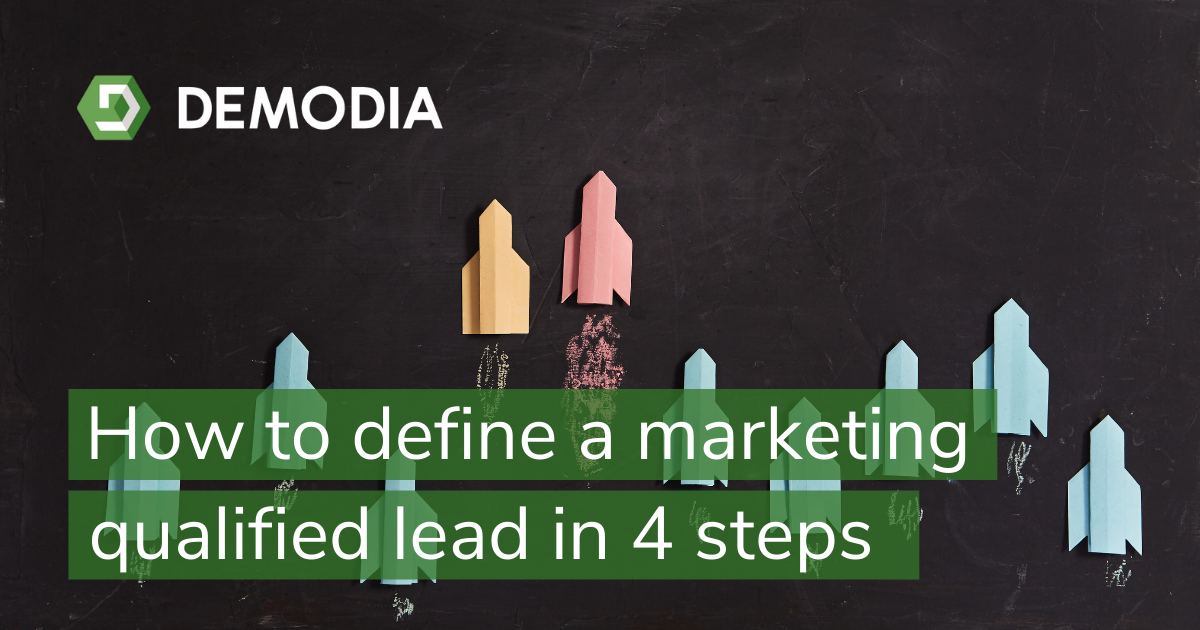How to define a marketing qualified lead in 4 steps

When are your leads ready to become customers?
No matter how good your marketing and sales teams are, you can’t sell something to someone who doesn’t want it or can’t afford it. Great marketing is thus not defined by the number of leads it generates but rather the amount of quality leads it brings into the business. Without these leads, you’ll spend a fortune on ineffective marketing tactics and assets with very little return.
We call these leads "Marketing Qualified Leads" (MQL), but the specific definition changes depending on the company’s definition. This blog will reveal the steps you can take to define what a Marketing Qualified Lead is for you.
What is a marketing qualified lead?
In general, a marketing qualified lead is any lead that is certified by your marketing efforts to be worthy of your sales team’s time. It’s a lead who has indicated an interest in your marketing efforts, company, or products and is more likely to become a customer than other leads.
If you’ve read our previous blog on the different types of leads, you’ll most likely find marketing qualified leads in the working, nurturing, and qualified lead categories. However, since the definition of a marketing qualified lead changes for different organisations, it cannot fit comfortably in any of these definitions.
Below, we’ll explain how you can define your own marketing qualified lead based on your requirements.
Defining your own marketing qualified lead
Figuring out what a marketing qualified lead means for you can be a confusing and complicated process. With so many characteristics of who your customers are, what your business wants to achieve, and your sales and marketing capabilities, we understand why many marketers simply refuse to define it themselves.
However, defining what a MQL is for you is essential for a healthy sales pipeline and ensuring your teams are as productive as possible. This section will guide you through 4 steps you can take to define your MQL.
STEP 1 - Speak to your sales team
Since marketing qualified leads will be handed off to your sales team, it only makes sense to have a conversation about what they expect. Set a meeting with your sales team to discuss the sales process and what common traits a lead who convert usually has. This will help you define the kind of lead you ideally want to attract.
During this step, you should also agree with sales at what stage a lead would be ready for them to approach. You must agree on aspects like what the lead knows, their background, and whether they have the right decision-making power.
Here are a few questions to discuss with your sales team:
- What type of marketing content should be engaged with to define someone as an MQL?
- Which specific defining traits (demographic and firmographic) are necessary to call someone an MQL?
- Which pain points or challenges should a person have to make them an MQL?
STEP 2 - Set behavioural and demographic qualification factors
We know that “setting behavioural and demographic qualification factors” sounds like it belongs on a science blog instead of this one, but stay with us - the definition is easier than you think.
After a conversation with your sales team, you should have a fair idea of what your company needs your leads to know and be before they’re likely to become customers. The actions a lead takes and how they engage with your marketing materials determine their behavioural factors, while who the lead is - their income, positions, industry, age, gender - are their demographic factors.
For behavioural factors, you want to see how they engage positively with your marketing. If a lead visits your website multiple times and checks out your pricing page before subscribing to your blog, these are all positive indicators that they could be a potential customer. However, should that same lead turn out to be a student and you’re selling cruise liners, you just discovered a demographic qualification factor that disqualifies them as a MQL.
This is why both behavioural and demographic factors are needed to classify your MQL. A lead must be likely (behavioural) and able (demographic) to purchase your product or service.
STEP 3 - Refer to or create buyer personas
You’ll have some insights into who your customers usually are and what kinds of customers you want to attract with the information above. You will also know what your leads should understand and know before talking to sales.
You should use this information to update or create your buyer personas. Should a lead match these definitions - both behaviorally and demographically - you have yourself a marketing qualified lead.
STEP 4 - Revise regularly
Your prospects, buyer personas, and leads evolve as the business grows. Over time, you will want different customers, or your customers may require more from your company. That’s why it’s essential to go back to your MQL definition and adjust accordingly.
We suggest reviewing your lead definitions quarterly with your team to identify any changes they perceive. It will help your marketing and sales team while also continuously keeping your messaging relevant and effective.

You’re now qualified
You can go a lot deeper with MQLs and even set up automated processes to define them through lead scoring. We’ll cover that process in another blog, but just know that you can always improve upon your lead scoring and MQL definitions.
At Demodia, we’ve seen so many marketers become despondent with the number of customers they generate. We understand that it can be frustrating to spend so much on lead generation without seeing any results - which is why we’ve spent over a decade perfecting the best lead approaches for our customers, helping them turn their marketing into a customer-generation machine.
Contact us now and we’ll meet with you to discuss your customer acquisition goals and present you with a plan to help you achieve them.
